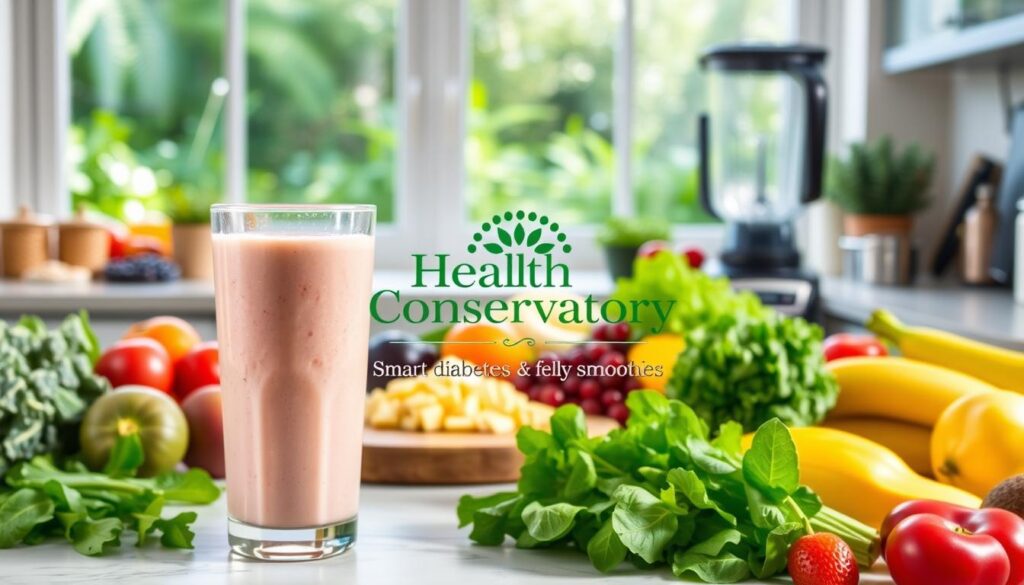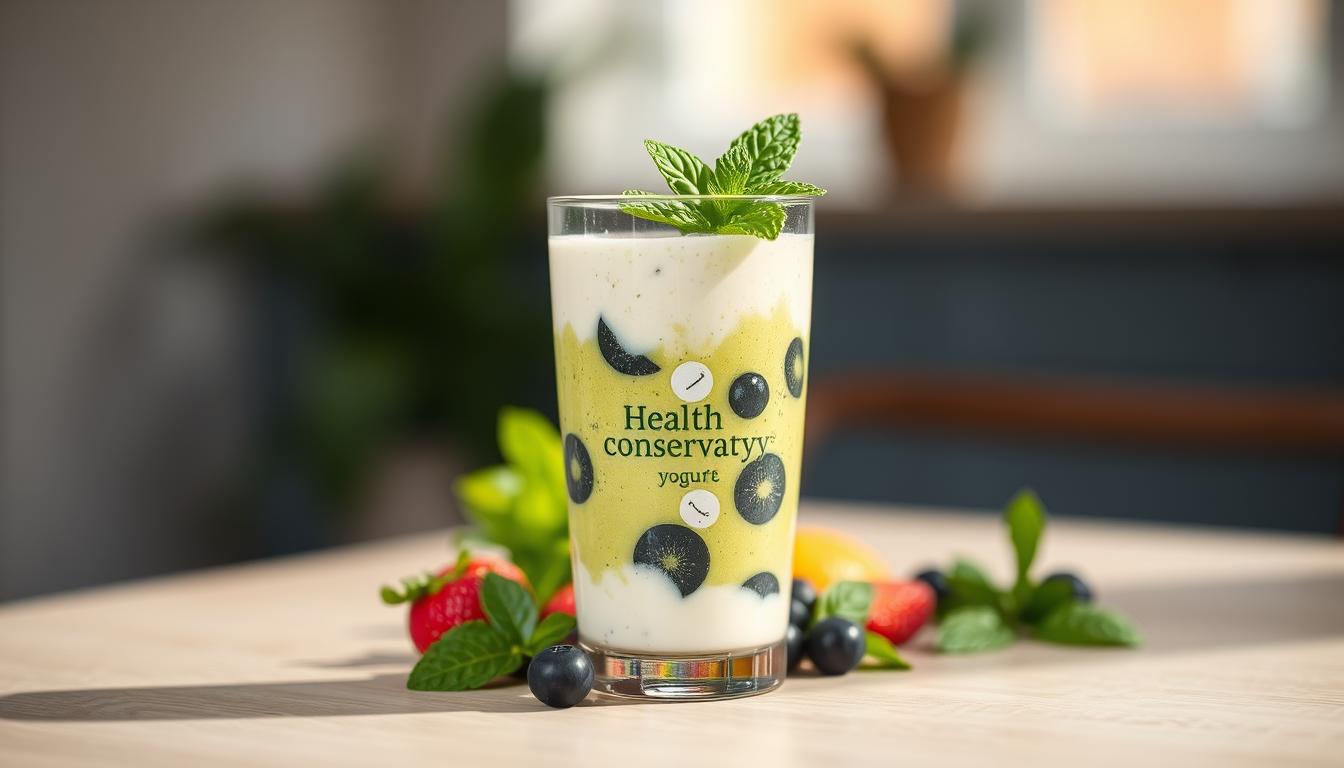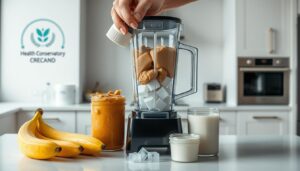Are Smoothies Good for Diabetics can sound like a simple question, but it opens a complex conversation about blood sugar, portion size, and smart vegan nutrition.
Can a blended drink keep your energy steady instead of spiking your glucose? The answer depends on ingredients, balance, and servings.
Choose high-fiber fruits and greens, and add plant protein and healthy fats to slow how quickly sugar hits your blood. Blending often raises the glycemic impact versus whole produce, so keep a smoothie near 8–12 ounces and about 45 grams of carbs or less.
Tips: use unsweetened almond or soy milk, avoid sweetened bases, and watch hidden sugars in café blends. If you want tailored vegan blends that match your health and nutrition goals, try our smoothie generator at https://healthconservatory.com/smoothie-generator.
Key Takeaways
- Balance fiber, protein, and healthy fats to reduce rapid sugar rises.
- Keep servings modest: about 8–12 ounces and ~45 g carbs or less.
- Blending can raise glycemic impact compared with whole produce.
- Use unsweetened plant milks and avoid added sugars in recipes.
- Customize vegan blends with our smoothie generator for safer choices.
Are Smoothies Good for Diabetics? The quick answer for vegan eaters today
A well-built vegan blend can give steady energy without the quick sugar rush many drinks cause.
How smoothies can affect blood sugar levels and energy
Blended drinks expose sugars faster than whole fruit, which can raise blood sugar quickly if portions are large or the mix uses juice or many fruit servings.
Balance matters. Add plant protein and healthy fats to slow absorption and keep your energy steady. This helps prevent mid-day crashes and reduces sharp spikes.
When a smoothie should be a snack versus a meal
Treat a smaller cup as a snack and a larger, protein-rich blend as a meal.
- Snack: 8–12 ounces, lower calories, ~45 g carbs or less, simple protein like a scoop of pea powder.
- Meal: includes tofu, seeds, or nut butter to supply lasting protein and fiber.
- If you feel hungry soon after, the mix likely lacked protein or fiber and favored quick sugar.
| Type | Volume | Key goal |
|---|---|---|
| Snack | 8–12 oz | Prevent spikes; moderate carbs |
| Meal | 12–16 oz | Replace calories; add protein and fat |
| Watch | 1 cup fruit max | Avoid juice, limit carbohydrates |
Quick tip: choose unsweetened bases and add chia, flax, or hemp to slow digestion and steady your blood. If you live with diabetes, time drinks around activity and meals to avoid overlapping carbs. Try our smoothie generator to build balanced vegan blends that limit blood sugar spikes.
How smoothies affect blood sugar: glycemic index, fiber, and absorption
Understanding how a blended drink changes digestion helps you choose ingredients that keep your glucose steady.
When you puree fruits and veg, their structure changes and glucose can reach your bloodstream faster. Blending breaks plant cell walls and reduces particle size, which speeds gastric emptying and raises the glycemic effect compared with whole food.
Why blending changes how fruits and vegetables affect blood
Smaller particles mean enzymes and stomach acids access sugars more quickly. That faster absorption can cause blood sugar to climb sooner than when you eat intact produce.
Low-GI choices that won’t spike blood sugar
Choose berries, citrus, rolled oats, and unsweetened soy or almond milk to lower the glycemic load. Avoid juice bases, watermelon, instant oats, and rice milk — they can raise glucose fast.
The role of soluble and insoluble fiber
Soluble fiber forms a gel that slows absorption and smooths post-meal blood sugar levels. Insoluble fiber keeps digestion regular and lowers how much other food components affect blood.
“Combine low-GI fruits with plant protein and modest fats to slow digestion and reduce spikes.”
- Pair low-GI fruits with protein (tofu, pea powder) and fats (chia, flax, avocado).
- Keep carbohydrates modest per drink and avoid added sugar in your base milk.
Build-your-own diabetes-friendly vegan smoothie: a step-by-step framework
Start with a low-carb liquid and build layers of protein, fiber, and measured fats to keep your blood steady.
Choose a smart base
Pick water, iced green tea, or unsweetened almond, soy, or hemp milk. These options keep sugar and carbs low and help a smoother blood response.
Add plant protein
Include ½–1 cup silken tofu or a scoop of pea or rice protein powder to slow absorption and boost satiety. Protein supports muscle and reduces quick glucose rises.
Keep fruits and portions modest
Limit fruit to one cup berries or ½ banana plus a citrus wedge. That gives flavor, antioxidants, and controlled sugar per cup.
Pack in vegetables and fiber
Blend 1–2 cups spinach, kale, or cucumber for volume and nutrients with minimal carbs. Extra fiber helps temper post-drink blood changes.
Measure healthy fats and seeds
Add 1–2 tablespoons chia, ground flax, hemp seeds, avocado, or peanut butter. These fats slow digestion and extend fullness without excess calories.
Flavor without added sugar
Use cinnamon, ginger, cocoa, vanilla, or mint to boost taste. Avoid syrups and sweetened mixes that add hidden sugar.
Think “fruit + protein + fiber + modest fats” and keep the blend to about 8–12 ounces for best results.
Try a quick build: water or unsweetened milk + scoop of protein powder + ¾ cup berries + 1 cup spinach + 1 tbsp chia. Adjust protein up if you train, or cut fruit for a lighter snack.
Portions, carbs, and ratios that help you avoid blood sugar spikes
Set clear carb targets before you blend so each drink fits into your daily plan. A simple rule helps: aim for up to about 45 g carbohydrates per drink unless your care plan says otherwise.
Carbohydrate targets per smoothie and how to count them
Use a measuring cup and basic exchanges to total your carbs. For example, ¾ cup blueberries ≈ 15 g and a small banana ≈ 15 g.
- Choose a single target: up to ~45 g carbohydrates per serving.
- Count the base: unsweetened plant milks can add hidden sugar—read labels to keep carbs in check.
- Tally fruit, oats, and extras so your sugar levels stay predictable.
The ideal size: keeping your smoothie to 8-12 ounces when needed
Keep most blends near 8–12 ounces to avoid turning a drink into a full meal. If you need more fuel, add protein and vegetables rather than extra fruit.
- If you want a snack, aim near 8 ounces; a larger cup can raise your blood response.
- Add fiber with leafy greens or chia to blunt rises without adding many carbs.
- Test your numbers: check before and 1–2 hours after to see how your body responds and adjust next time.
Common smoothie pitfalls that can cause blood sugar spikes
Hidden sweeteners and oversized portions often turn a sensible snack into a rapid glucose trigger. You may think a fruity cup is harmless, but added sugar and large servings change the effect.
Watch liquid bases and labeled ingredients
Read labels: sweetened almond or soy milk, flavored yogurts, and bottled juices add unexpected sugar. Those items can raise your blood quickly.
Limit high-GI fruits and total servings
Multiple ripe fruits or high-GI choices like watermelon can cause sugar spikes. Keep fruit to one measured serving and add greens or fiber instead.
Mind fats and total calories
Fats like peanut butter or coconut are helpful in small amounts but can push a snack into a dense meal. Measure fats to avoid extra calories and weight gain.
“Skip juices and syrups; they concentrate sugar without fiber and can spike blood fast.”
- Ask cafes for unsweetened milk and no syrups.
- Add seeds and leafy greens for fiber to slow absorption.
- If a blend raises your numbers, halve the fruit and add protein or veg.
| Common Pitfall | Why it matters | Quick fix |
|---|---|---|
| Sweetened plant milk | Can add 8–12 g sugar per cup and raise blood | Choose unsweetened labels or water |
| Multiple fruit servings | Combines sugars and increases glycemic load | Limit to one cup fruit; add spinach or cucumber |
| Too much fat or add-ins | Turns snack into high-calorie meal | Measure fats (1 tbsp nut butter or 1 tbsp seeds) |
Smart choices at home and on the go for people with diabetes

Smart ordering and home prep help you enjoy blended drinks without unnecessary sugar or oversized portions.
Ordering tips
When you order, request unsweetened almond or soy milk. Ask the barista to skip syrups, honey, and added sugar.
Limit fruits to about one cup and ask what protein powder they use. Choose a vegan powder with no extra sweeteners.
Three vegan templates
- Green Balance: 1 cup unsweetened almond milk, ½ cup berries, ½ banana, ½ cup silken tofu, 1 cup spinach, 1 tbsp peanut butter, cinnamon.
- Citrus-Berry Power: iced green tea base, 1 cup mixed berries, pea protein powder, 1 cup kale, 1 tbsp chia, a dash of vanilla.
- Creamy Cucumber: unsweetened soy milk, ½ cup berries, pea or rice protein, 1 cup cucumber, 1 tbsp flax seeds, cocoa powder.
At-home tips: pre-portion frozen fruits into single-serving bags. Measure peanut butter to 1 tablespoon and use seeds to add fiber and keep you full.
“Keep drinks near 8–12 ounces as a snack and emphasize vegetables and protein to steady blood sugar levels.”
| Action | Why it helps | Quick tip |
|---|---|---|
| Unsweetened plant milk | Reduces hidden sugar | Request almond or soy |
| One cup fruit max | Keeps carbs steady | Use berries or ½ banana |
| Measure fats & seeds | Adds satiety without extra carbs | 1 tbsp nut butter or seeds |
Ready to personalize? Use our Smoothie Generator to build a vegan, diabetes-friendly blend: https://healthconservatory.com/smoothie-generator
Conclusion
blood sugar control is possible while enjoying plant-based blends when you plan every cup.
Use low-sugar liquids, one measured serving of fruits, and add protein, fiber, plus modest fats to limit blood sugar spikes.
Keep the portion sized as a snack or a small meal and pair your drink with activity or a plate to avoid overlapping carbs. Read labels, choose water or unsweetened milk, and favor whole greens to slow absorption and steady sugar levels.
Ready to customize? Build a vegan, diabetes-friendly smoothie in seconds at https://healthconservatory.com/smoothie-generator and protect your health with intentional ingredients and portions.




